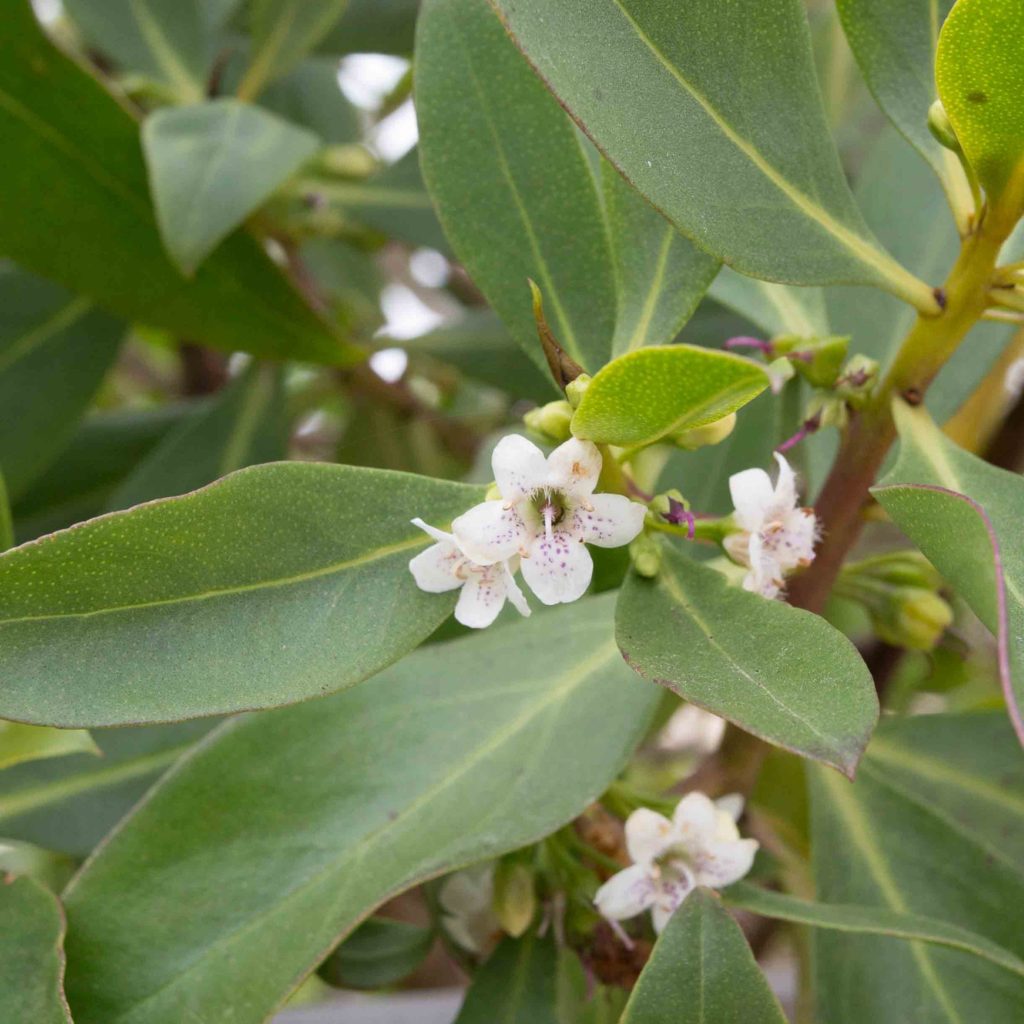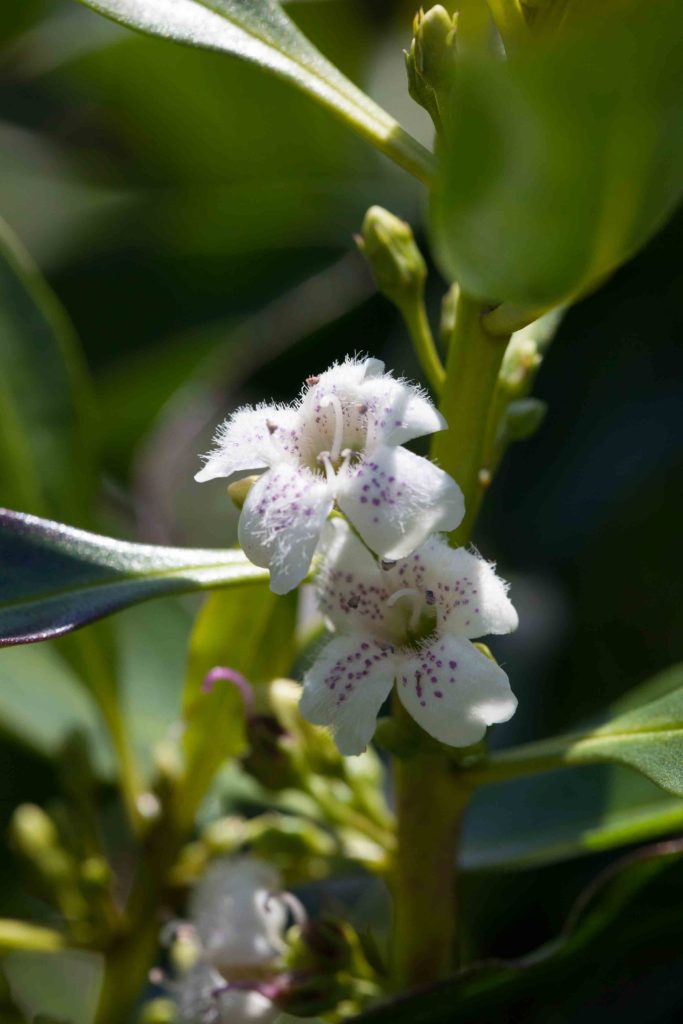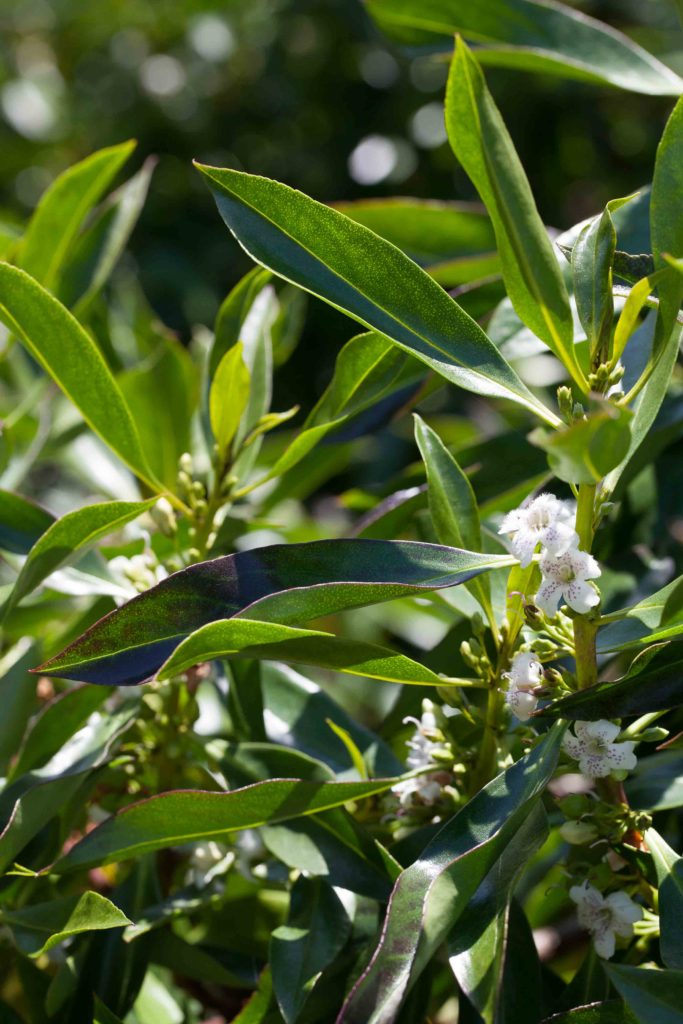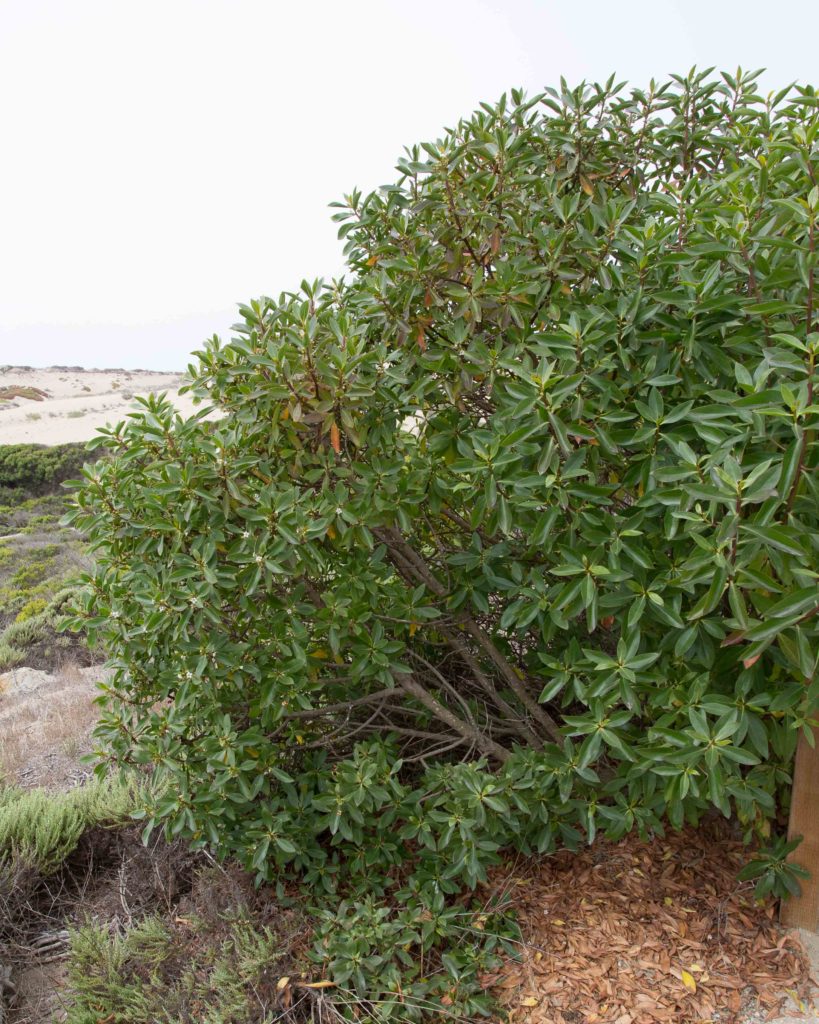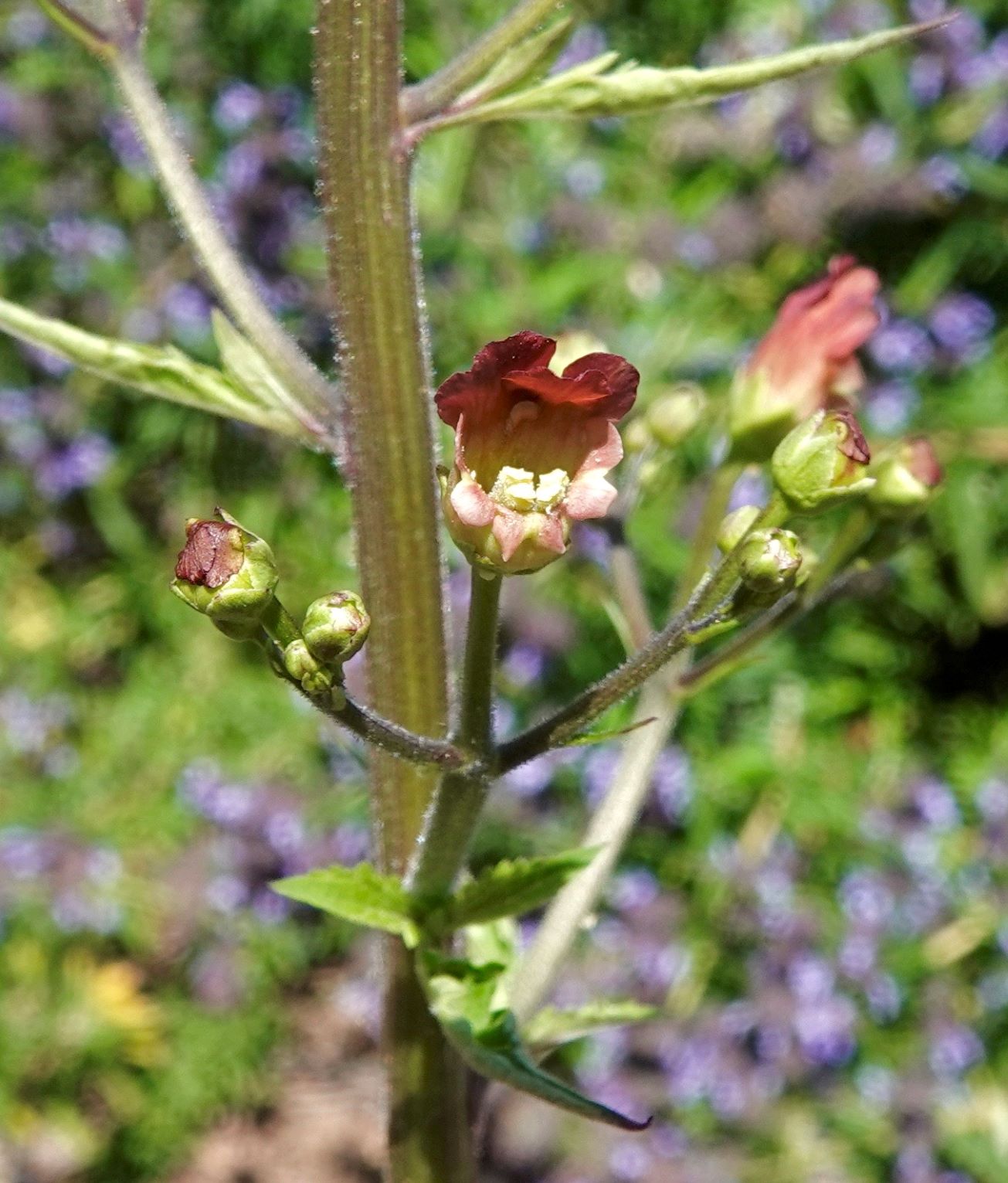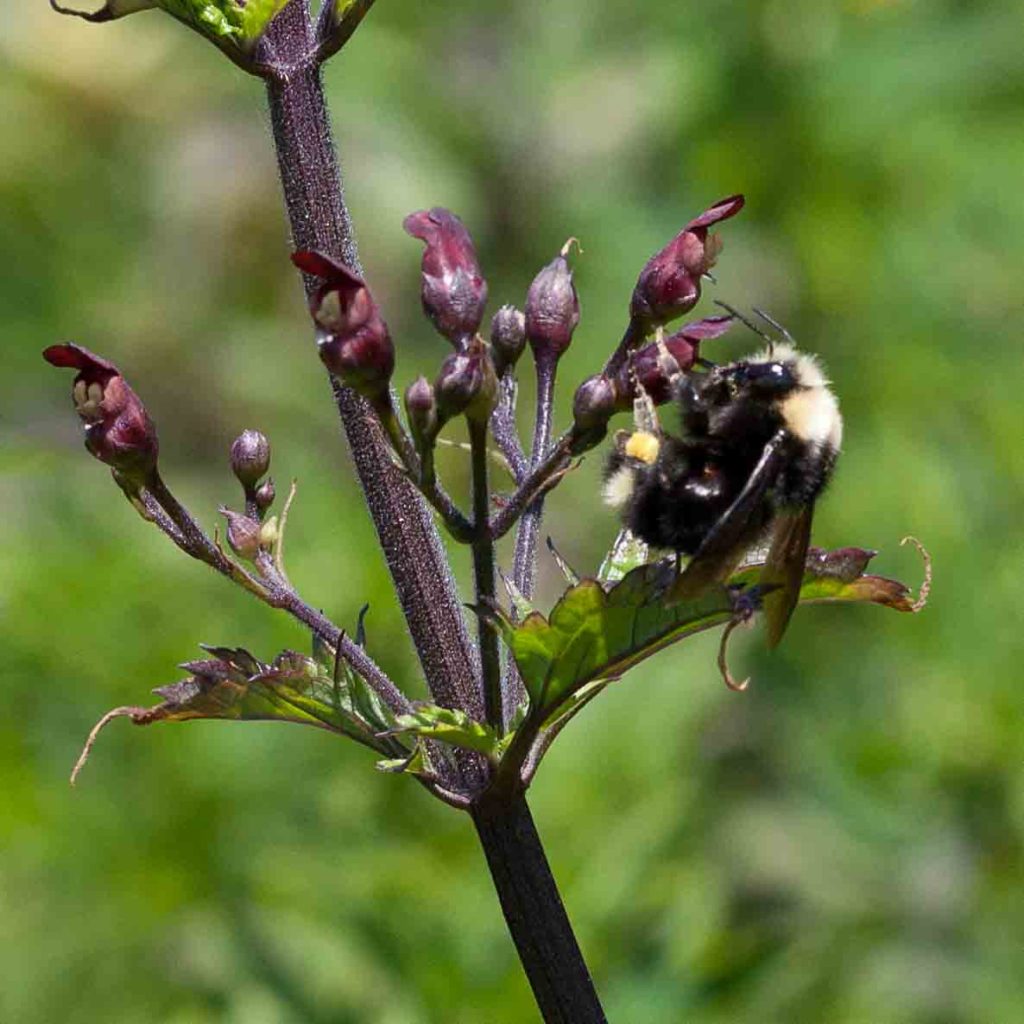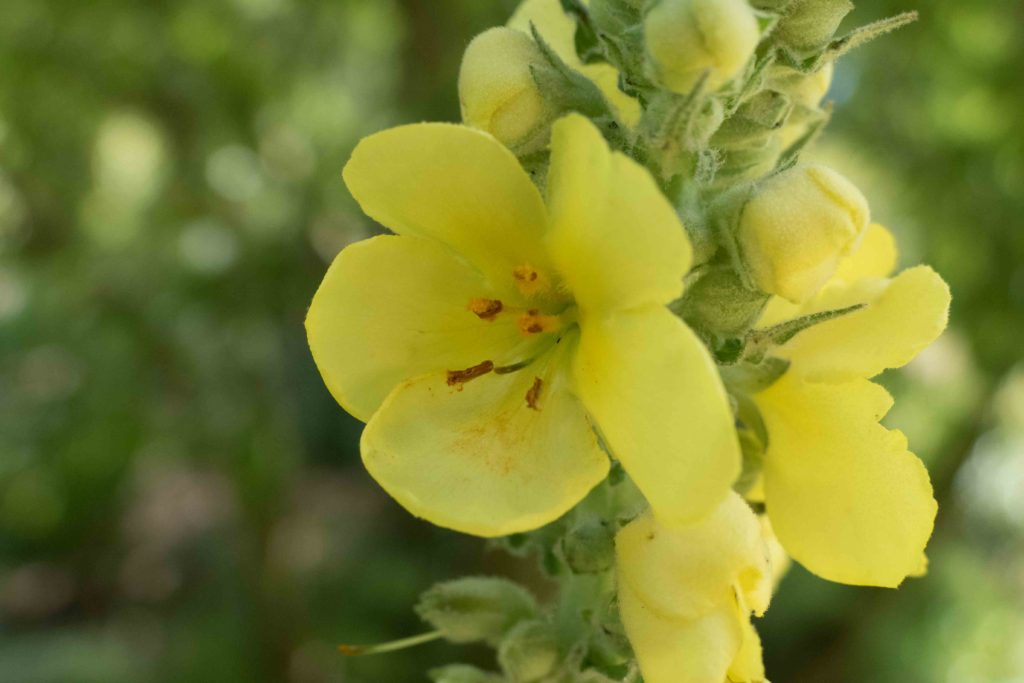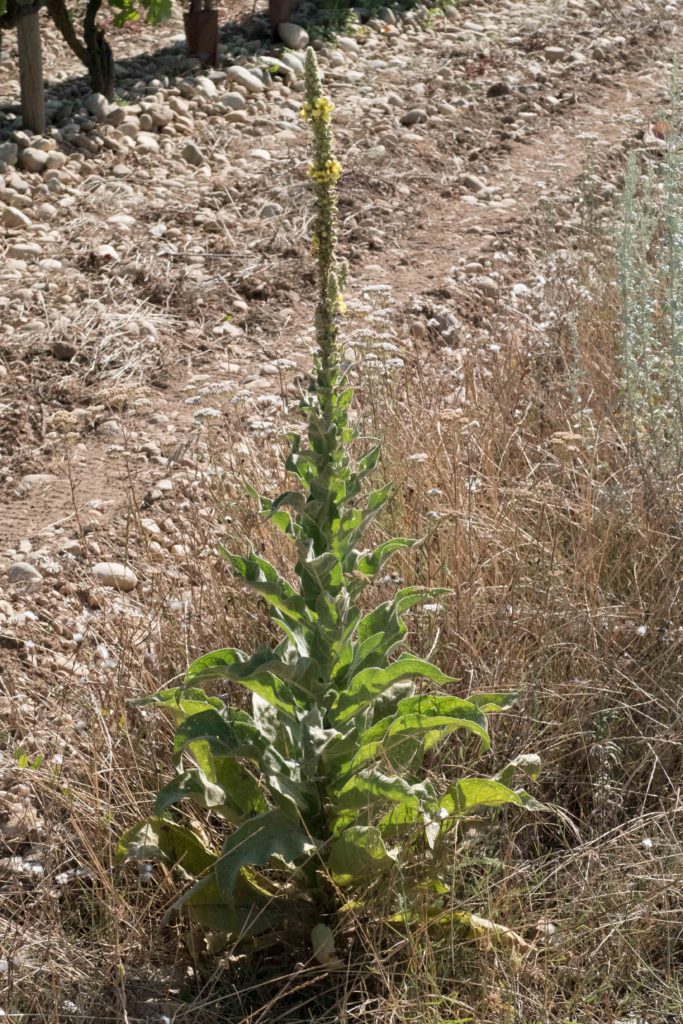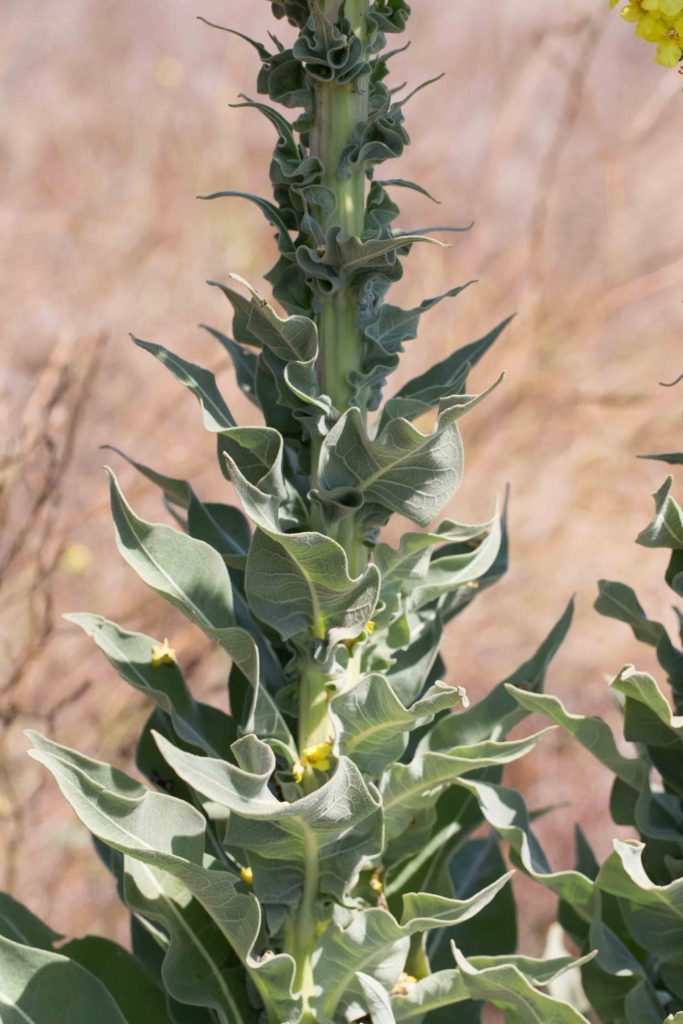Scrophulariaceae: Figwort Family
Ngaio Tree – Myoporum laetum
Blooms:
Early spring
Plant Height:
3–10 m
Flower Size:
Medium
Origin:
New Zealand
Habitat:
Escape from cultivation
Notes:
This is a commonly cultivated shrub to small tree, much branched and broadly spreading. The leaves are lanceolate, bright green and fleshy, up to 10 cm long. Flowers are about 1 cm across, bell-shaped and white with purplish spots.
Bee Plant / Coast Figwort – Scrophularia californica
Blooms:
Mar–July
Plant Height:
80–120 cm
Flower Size:
Small
Origin:
Native
Habitat:
Damp places near coast
Notes:
This common plant is easily recognized by its large, coarsely serrated, opposite, nettle-like leaves, and by its many small, red to maroon flowers. These produce copious amounts of nectar and, as the common name suggests, attract bees. Hummingbirds also use it, although the volume of nectar per blossom must be small. The upper corolla lip is erect and elongated. The lower lip has a single lip which extends outward to form the nectar pouch. After a taxonomic reorganization, this plant is one of the few survivors in the formerly extensive Figwort family. Photo #1 by CJH.
Woolly / Common Mullein – Verbascum thapsus
Blooms:
June–Sept
Plant Height:
0.3–2 m
Flower Size:
Large
Origin:
Eurasia
Invasive?
Yes – limited
Habitat:
Roadsides, streambanks & disturbed areas
Notes:
This plant is usually unbranched, though branching forms are occasionally found. It is tall and distinctive, with large, lanceolate leaves (basal to 50 cm, cauline to 30 cm). The cauline leaves are long-decurrent. Flowers are in a tall spike, large (15–25 mm wide) and bright yellow. The upper three filaments are white or yellow-hairy, and the lower two filaments glabrous or only sparsely hairy.
Although not recorded in the county, some branching mulleins may in fact be a separate species, Showy Mullein (Verbascum speciosum). This has a candelabra-like appearance and several other subtle differences when compared to Woolly Mullein.
